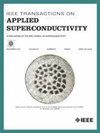Design of Quench Detection System for Background DC Magnet in the Conductor Performance Research Platform of CRAFT
IF 1.7
3区 物理与天体物理
Q3 ENGINEERING, ELECTRICAL & ELECTRONIC
引用次数: 0
Abstract
The conductor performance research platform is part of the Comprehensive Research Facility for Fusion Technology project presently under construction in China, and the background dc magnet system is used to generate a back field of up to 15 T. Its superconducting magnet system is designed with three different cable-in-conduit conductor structures, which are divided into the high-field coil (16 T), the medium-field coil (14 T), and the low-field coil (11 T), of which the high-field/midfield coil is a high-performance Nb 3 Sn superconducting material, and the low-field coil is an international thermonuclear experimental reactor Nb 3 Sn superconducting magnet. The original quench detection system featured a multimodular design for easy maintenance and back-end signal acquisition; however, analog signals were susceptible to interference during long-distance transmission. To optimize the quench detection system and ensure the safe operation of superconducting magnets, a reliable and fast-response quench detection system is essential during plant operation. This article provides a comprehensive introduction to the quench detection techniques applied to the different magnet systems. By analyzing the system's quench behavior, a multisystem complementary detection technique is proposed, which can enhance the reliability of quench detection.为 CRAFT 导体性能研究平台中的背景直流磁体设计淬火检测系统
导体性能研究平台是中国正在建设的聚变技术综合研究装置项目的一部分,背景直流磁体系统用于产生高达 15 T 的背场。其超导磁体系统设计有三种不同的电缆导管内导体结构,分为高场线圈(16 T)、中场线圈(14 T)和低场线圈(11 T),其中高场/中场线圈为高性能 Nb3Sn 超导材料,低场线圈为国际热核聚变实验堆 Nb3Sn 超导磁体。最初的淬火检测系统采用多模块设计,便于维护和后端信号采集;但模拟信号在长距离传输过程中容易受到干扰。为了优化淬火检测系统并确保超导磁体的安全运行,在工厂运行期间,一个可靠且快速响应的淬火检测系统是必不可少的。本文全面介绍了应用于不同磁体系统的淬火检测技术。通过分析系统的淬火行为,提出了一种多系统互补检测技术,可提高淬火检测的可靠性。
本文章由计算机程序翻译,如有差异,请以英文原文为准。
求助全文
约1分钟内获得全文
求助全文
来源期刊

IEEE Transactions on Applied Superconductivity
工程技术-工程:电子与电气
CiteScore
3.50
自引率
33.30%
发文量
650
审稿时长
2.3 months
期刊介绍:
IEEE Transactions on Applied Superconductivity (TAS) contains articles on the applications of superconductivity and other relevant technology. Electronic applications include analog and digital circuits employing thin films and active devices such as Josephson junctions. Large scale applications include magnets for power applications such as motors and generators, for magnetic resonance, for accelerators, and cable applications such as power transmission.
 求助内容:
求助内容: 应助结果提醒方式:
应助结果提醒方式:


